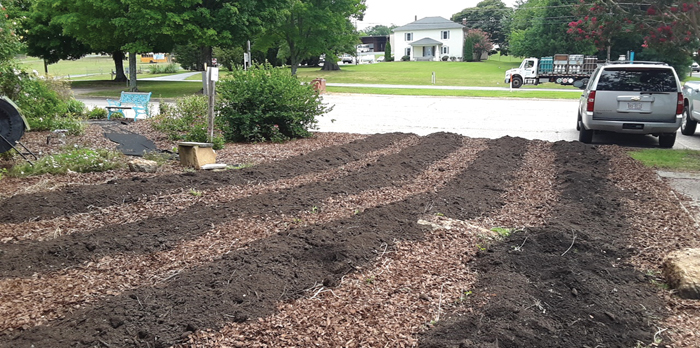Best practices for a good fall garden
Published 12:00 am Friday, August 24, 2018

- Submitted photo Vegetative debris was cleared out and new compost was added to existing beds.
By Nick Fine
Rowan Cooperative Extension
Back in late July, we reminded folks that it was time to clean out those old vegetable plots from early summer and prepare the ground for the upcoming fall growing season. The rationale was that many of those plants had surpassed their prime and, while weeds and disease pressure were on the rise, it would be a good idea to clean out and replant garden plots in fall vegetables.
Sometimes it is hard to throw out plants that are hanging onto life and yielding even a small amount of fruit, but this season especially, that strategy would have proven more appropriate than ever. After the unusually wet weather patterns we have experienced, many summer vegetables have finally bit the dust. On the flip side, any fall seeds planted right before the onslaught of rain have more than likely germinated with ease and are well on their way to maturity.
If you missed the planting window we had right before the rain settled in, do not despair because you have not yet missed your opportunity to get that fall garden planted. In the Piedmont region of North Carolina, planting dates for vegetables such as beets, turnips, lettuce, collards, kale, mustard greens, spinach and rutabaga extend until mid-September. When you stop and think about it, we are really lucky to have such a prolonged growing season that can sustain fresh food well into the early winter months.
So, for the folks who planted before the rain, good for you. Chances are you have a garden similar to the demonstration garden located at the Rowan County Cooperative Extension Office. Germination was a huge hurdle to overcome, and now that we have seedlings established, we shift our focus to soil fertility and pest management.
For the folks who are just now planting, you can still have a great fall garden, but bear in mind that you have no time to waste. That sense of urgency not only pertains to sowing seeds and transplanting seedlings, but also making sure that you are creating the conditions in which every day is actually a day during which the crop is maturing.
That’s kind of a mind bender and a tongue twister, but think about it — the seed packet says 65 days until maturity; that is not counting the time that seed may sit in the ground waiting for rain to initiate sprouting.
To ensure that your vegetables will mature before the first frost date and before the daylight hours are too short, think about setting up an irrigation system. A strategy that has proven effective for many gardeners is, after sowing seeds, setting misters on an automatic timer (once in the morning and again in the evening) to lightly water the soil’s surface, thus immediately initiating germination.
Keep using the misting system until the seedlings have established a strong tap root. Once the young plants develop their tap roots and are about 2-3 inches high, try switching to a soaker hose or a drip line system to prevent excessive moisture on the foliage of the young sprouts.
Remember, consistent soil moisture, adequate fertilization and a pest management program will keep plants productive every day and give them a better chance at reaching maturity before temperatures and sunlight hours prohibit growth in the late fall. Good luck and happy harvesting!



